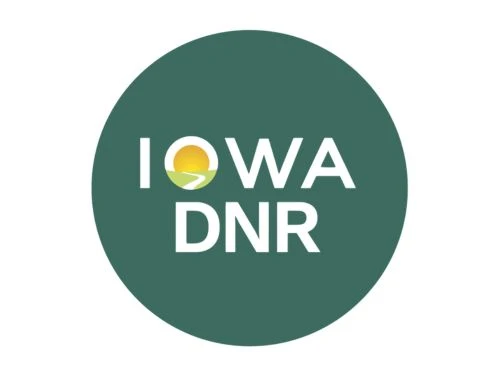The Iowa Department of Natural Resources (DNR) announced the first-ever collection of the federally endangered pallid sturgeon from the lower Des Moines River. The discovery of two pallid sturgeon this spring came a week a part during the Iowa DNR’s annual spring sturgeon sampling effort.
This sampling has been conducted since 2014, but until this year, only shovelnose sturgeon, and an occasional lake sturgeon, have been collected. “To find a pallid sturgeon was a surprise, but to find a second one in nearly the same spot a week later was truly remarkable,” said Joe Larscheid, chief of the Iowa DNR’s Fisheries Bureau.
Pallid sturgeon are one of the rarest and most endangered species in North America. They were placed on the federal endangered species list in 1990 due to slow and continual declines in their populations throughout the Missouri and lower Mississippi River basins. The declines were due to limited natural recruitment often attributed to habitat loss and fragmentation caused by dams, which blocked migration routes for spawning adults and reduced or limited critical flow needed for larval development. While pallid sturgeon have been the focus of recovery efforts in the Missouri River, they have never been officially documented in the Des Moines River.
“The presence of these wild, likely decades-old sturgeon, alongside other native sturgeon species preparing to spawn, reinforces the value of this river stretch,” Larscheid said.
While the discovery is monumental, Mark Flammang, fisheries biologist for the Iowa DNR, said the wild population remains critically small and is not self-sustaining.
“Nearly nine out of ten pallid sturgeon collected from the Iowa section of the Missouri River were originally stocked from a hatchery. Finding two naturally reproduced individuals is a game changer for how the Iowa DNR and its partners manage the Des Moines River. This is a positive milestone, but does not mean the species has recovered,” Flammang said.
Pallid sturgeon are slow-growing and late to mature, with females not spawning until they are 15-20 years old.
Anglers fishing in this stretch of the river who may incidentally catch a sturgeon will need to know how to identify the different species. The Iowa Fishing Regulations includes images identifying characteristics for the lake sturgeon, the pallid sturgeon, and the shovelnose sturgeon. Pallid sturgeon have a smooth belly; its outer barbels are twice as long as the inner barbels; and the base of barbels is “U” shaped, with inner two set out in front.
Of the three, only the shovelnose sturgeon may be kept – the lake and pallid sturgeon must be immediately released unharmed.
